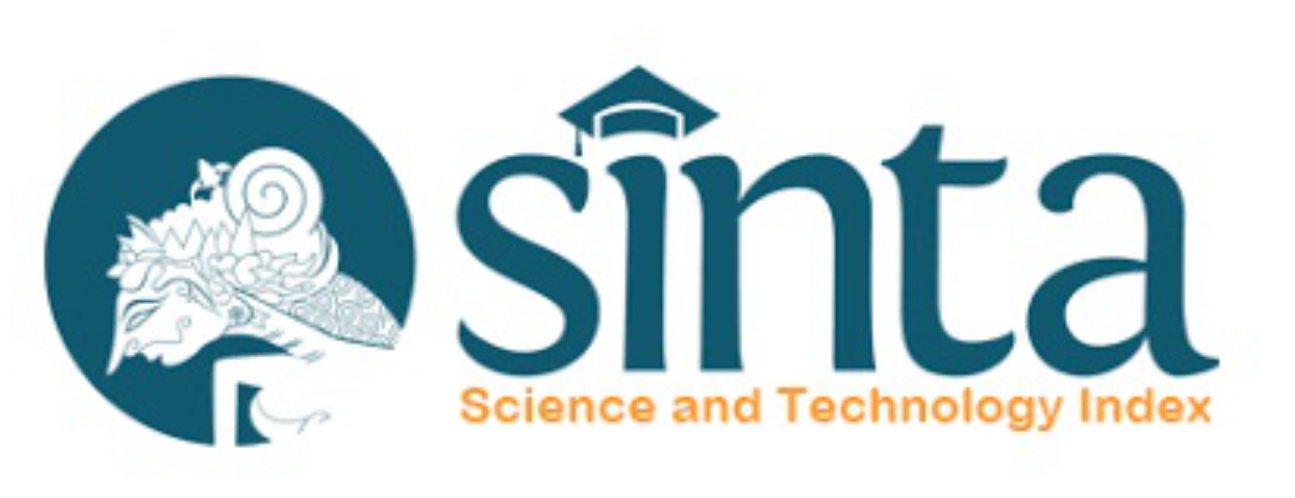Advances in Electrospun Polymer-Based Nanofibers for Wound Healing: A Narrative Review
Abstract
Polymer-based nanofibers produced using electrospinning techniques have become a significant innovation in drug delivery systems, particularly in wound healing. The nanofiber structure, which resembles the extracellular matrix (ECM), provides an advantage in supporting tissue regeneration and drug release control, making it an effective solution for the treatment of acute and chronic wounds. The aim of this review is to analyze recent advancements in the use of polymer-based nanofibers for drug delivery in wound healing therapy. The method used is a systematic approach with modified PRISMA guidelines. Relevant literature was extracted from the ScienceDirect database using the keywords "polymers", "nanofiber", "electrospinning" and "wound healing," with the publication period limited to 2016–2025. From the search results that yielded 5,750 articles, a strict selection process narrowed them down to 21 relevant articles for analysis. The analysis results show that polymer-based nanofibers such as PVA, PCL, and PVP demonstrate outstanding abilities in delivering antibacterial drugs, enhancing wound healing efficiency, and combating infections, especially in chronic wounds. Nanofiber technology also provides innovative solutions in mitigating bacterial resistance. In conclusion, polymer-based nanofibers open significant opportunities in the pharmaceutical field and wound healing therapy with more precise and effective drug release control.
Keywords
Full Text:
PDFReferences
C. Gnocchi et al., “Zein spray-dried microparticles loaded with chemically modified curcumin for active wound healing,” J. Drug Deliv. Sci. Technol., vol. 101, no. PA, p. 106155, 2024, doi: 10.1016/j.jddst.2024.106155.
L. Miranda-Calderon, C. Yus, G. Landa, G. Mendoza, M. Arruebo, and S. Irusta, “Pharmacokinetic control on the release of antimicrobial drugs from pH-responsive electrospun wound dressings,” Int. J. Pharm., vol. 624, no. June, p. 122003, 2022, doi: 10.1016/j.ijpharm.2022.122003.
G. Landa et al., “Real-time in vivo monitoring of the antimicrobial action of combination therapies in the management of infected topical wounds,” Int. J. Pharm., vol. 646, no. October, p. 123502, 2023, doi: 10.1016/j.ijpharm.2023.123502.
A. Martin et al., “Zein-polycaprolactone core–shell nanofibers for wound healing,” Int. J. Pharm., vol. 621, no. March, p. 121809, 2022, doi: 10.1016/j.ijpharm.2022.121809.
L. Victoria Schulte-Werning, B. Singh, M. Johannessen, R. Einar Engstad, and A. Mari Holsæter, “Antimicrobial liposomes-in-nanofiber wound dressings prepared by a green and sustainable wire-electrospinning set-up,” Int. J. Pharm., vol. 657, no. April, p. 124136, 2024, doi: 10.1016/j.ijpharm.2024.124136.
R. Abdulhussain, A. Adebisi, B. R. Conway, and K. Asare-Addo, “Electrospun nanofibers: Exploring process parameters, polymer selection, and recent applications in pharmaceuticals and drug delivery,” J. Drug Deliv. Sci. Technol., vol. 90, no. November, p. 105156, 2023, doi: 10.1016/j.jddst.2023.105156.
A. Afshar, H. Majd, A. Harker, and M. Edirisinghe, “Tailored binary polymer system PCL-PEO for advanced biomedical applications: Optimization, characterization and in vitro analysis,” J. Drug Deliv. Sci. Technol., vol. 95, no. March, p. 105582, 2024, doi: 10.1016/j.jddst.2024.105582.
S. Mottola, G. Viscusi, R. Belvedere, A. Petrella, I. De Marco, and G. Gorrasi, “Production of mono and bilayer devices for wound dressing by coupling of electrospinning and supercritical impregnation techniques,” Int. J. Pharm., vol. 660, no. May, p. 124308, 2024, doi: 10.1016/j.ijpharm.2024.124308.
B. Singh, S. Yun, and M. H. Park, “Light-responsive layer-by-layer assembled nanofibers for sequential drug release,” J. Drug Deliv. Sci. Technol., vol. 88, no. August, p. 104910, 2023, doi: 10.1016/j.jddst.2023.104910.
A. M.R.H. Mostafa, O. Petrai, A. A. Poot, and J. Prakash, “Polymeric nanofiber leveraged co-delivery of anti-stromal PAK1 inhibitor and paclitaxel enhances therapeutic effects in stroma-rich 3D spheroid models,” Int. J. Pharm., vol. 656, no. April, 2024, doi: 10.1016/j.ijpharm.2024.124078.
X. Bao et al., “Antibacterial and antioxidant films based on HA/Gr/TA fabricated using electrospinning for wound healing,” Int. J. Pharm., vol. 626, no. May, p. 122139, 2022, doi: 10.1016/j.ijpharm.2022.122139.
S. Liu et al., “Smart chitosan-based nanofibers for real-time monitoring and promotion of wound healing,” Int. J. Biol. Macromol., vol. 282, no. P1, p. 136670, 2024, doi: 10.1016/j.ijbiomac.2024.136670.
L. M. Abdel-Rahman et al., “Vancomycin-functionalized Eudragit-based nanofibers: Tunable drug release and wound healing efficacy,” J. Drug Deliv. Sci. Technol., vol. 58, no. March, p. 101812, 2020, doi: https://doi.org/10.1016/j.jddst.2020.101812.
Z. Hussain et al., “GelMA-catechol coated FeHAp nanorods functionalized nanofibrous reinforced bio-instructive and mechanically robust composite hydrogel scaffold for bone tissue engineering,” Biomater. Adv., vol. 155, p. 213696, 2023, doi: https://doi.org/10.1016/j.bioadv.2023.213696.
I. J. Hall Barrientos et al., “Electrospun collagen-based nanofibres: A sustainable material for improved antibiotic utilisation in tissue engineering applications,” Int. J. Pharm., vol. 531, no. 1, pp. 67–79, 2017, doi: 10.1016/j.ijpharm.2017.08.071.
D. Miele et al., “Design and development of polydioxanone scaffolds for skin tissue engineering manufactured via green process,” Int. J. Pharm., vol. 634, no. August 2022, 2023, doi: 10.1016/j.ijpharm.2023.122669.
Ł. Kaniuk, K. Berniak, A. Lichawska-Cieślar, J. Jura, J. E. Karbowniczek, and U. Stachewicz, “Accelerated wound closure rate by hyaluronic acid release from coated PHBV electrospun fiber scaffolds,” J. Drug Deliv. Sci. Technol., vol. 77, no. July, 2022, doi: 10.1016/j.jddst.2022.103855.
A. Kazsoki, B. Palcsó, A. Alpár, R. Snoeck, G. Andrei, and R. Zelkó, “Formulation of acyclovir (core)-dexpanthenol (sheath) nanofibrous patches for the treatment of herpes labialis,” Int. J. Pharm., vol. 611, 2022, doi: 10.1016/j.ijpharm.2021.121354.
A. Zidar, Š. Zupančič, J. Kristl, and M. Jeras, “Development of a novel in vitro cell model for evaluation of nanofiber mats immunogenicity,” Int. J. Pharm., vol. 650, no. December 2023, 2024, doi: 10.1016/j.ijpharm.2023.123696.
N. Bhardwaj and S. C. Kundu, “Electrospinning: A fascinating fiber fabrication technique,” Biotechnol. Adv., vol. 28, no. 3, pp. 325–347, 2010, doi: 10.1016/j.biotechadv.2010.01.004.
V. Reisi-Vanani et al., “Engineering of a core-shell polyvinyl alcohol/gelatin fibrous scaffold for dual delivery of Thymus daenensis essential oil and Glycyrrhiza glabra L. extract as an antibacterial and functional wound dressing,” J. Drug Deliv. Sci. Technol., vol. 81, p. 104282, 2023, doi: https://doi.org/10.1016/j.jddst.2023.104282.
T. Ju, S. Gaisford, and G. R. Williams, “Ciprofloxacin-loaded electrospun nanofibres for antibacterial wound dressings,” J. Drug Deliv. Sci. Technol., vol. 91, no. December 2023, p. 105264, 2024, doi: 10.1016/j.jddst.2023.105264.
A. S. Pádua, R. M. Rosa, T. Vieira, C. Henriques, and J. C. Silva, “Electrospun poly(N-vinylpyrrolidone) membranes with Ag nanoparticles for wound dressings: Production and characterization,” J. Drug Deliv. Sci. Technol., vol. 101, no. October, 2024, doi: 10.1016/j.jddst.2024.106303.
P. Chandika et al., “Electrospun porous bilayer nano-fibrous fish collagen/PCL bio-composite scaffolds with covalently cross-linked chitooligosaccharides for full-thickness wound-healing applications,” Mater. Sci. Eng. C, vol. 121, no. December 2020, p. 111871, 2021, doi: 10.1016/j.msec.2021.111871.
M. Lashkari et al., “Cell-based wound dressing: Bilayered PCL/gelatin nanofibers-alginate/collagen hydrogel scaffold loaded with mesenchymal stem cells,” Int. J. Biol. Macromol., vol. 239, p. 124099, 2023, doi: https://doi.org/10.1016/j.ijbiomac.2023.124099.
M. Najafiasl, S. Osfouri, R. Azin, and S. Zaeri, “Alginate-based electrospun core/shell nanofibers containing dexpanthenol: A good candidate for wound dressing,” J. Drug Deliv. Sci. Technol., vol. 57, no. March, p. 101708, 2020, doi: https://doi.org/10.1016/j.jddst.2020.101708.
N. Jiang et al., “Fabrication of biocompatible and biodegradable polyvinyl alcohol/sodium alginate blend polymers incorporating Ca2+ doped TiO2 nanocomposite 3D scaffold for biomedical applications,” J. Saudi Chem. Soc., vol. 27, no. 6, p. 101758, 2023, doi: https://doi.org/10.1016/j.jscs.2023.101758.
I. J. Hall Barrientos et al., “Fabrication and characterisation of drug-loaded electrospun polymeric nanofibers for controlled release in hernia repair,” Int. J. Pharm., vol. 517, no. 1–2, pp. 329–337, 2017, doi: 10.1016/j.ijpharm.2016.12.022.
Y. Zhao et al., “All-in-one bioactive properties of photothermal nanofibers for accelerating diabetic wound healing,” Biomaterials, vol. 295, no. January, p. 122029, 2023, doi: 10.1016/j.biomaterials.2023.122029.
P. Mishra, P. Gupta, and V. Pruthi, “Cinnamaldehyde incorporated gellan/PVA electrospun nanofibers for eradicating Candida biofilm,” Mater. Sci. Eng. C, vol. 119, p. 111450, 2021, doi: https://doi.org/10.1016/j.msec.2020.111450.
DOI: https://doi.org/10.18860/jip.v9i2.30062
Refbacks
- There are currently no refbacks.
Copyright (c) 2024 Journal of Islamic Pharmacy

This work is licensed under a Creative Commons Attribution-ShareAlike 4.0 International License.
© 2023 Journal of Islamic Pharmacy













